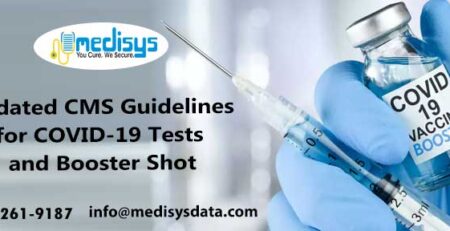In the last five years, CMS has increasingly supported reimbursement for a variety of telehealth services. COVID-19 pandemic highlighted the need for increased coverage for telehealth services like telemedicine and remote patient monitoring. As per a recent survey report, 57 percent of respondents indicated that they’d prefer to monitor ongoing health issues through at-home devices, while 52 percent said they would choose virtual, versus in-person, appointments for their routine health visits. As a result, The Centers for Medicare and Medicaid Services (CMS) has expanded its 2022 proposal to include Remote Therapeutic Monitoring (RTM). Recently, CMS released a proposal for its 2022 Physician Fee Schedule. RTM is a series of five treatment management service codes created by the CPT Editorial Panel in October 2020, with a target effective date of Jan. 1, 2022. The RTM family includes three Practice Expense-only (PE-only) codes and two codes that include professional work.
Defining Remote Therapeutic Monitoring (RTM)
The remote therapeutic management codes are designed as direct mirrors of the remote patient monitoring CPT codes, with RTM intended for the management of patients utilizing medical devices collecting non-physiological data. Despite the planned CMS coverage of remote therapeutic monitoring as outlined in the proposed rule, it’s important to note that RTM is a concept where the specific requirements are still largely undefined. We have the CPT descriptions from the American Medical Association and now what we’d describe as fairly vague, non-canonical musings by CMS in the proposed rule comments. We expect more information on these RTM codes in the coming months and will be sharing what we learn as details become clearer.
Why RTM is so Important?
Monitoring patients in the ways described by RTM provides opportunities for lowering spending on preventable hospitalizations, ED visits, and urgent care. In the United States, emergency department visits related to medication non-adherence cost more than $300 billion in a year. Leveraging RTM, physicians can ensure patients are properly taking their medications and manage responses to those medications, by allowing them to self-report information on these measures. Similar to the benefits of RPM, RTM will allow physicians to gain more information on how a patient’s daily life is impacting their conditions and overall health. This allows for the adjustment of care plans to support the best possible patient outcomes.
Difference between RTM and RPM
As per CMS, there are two major differences between RPM and RTM. First is that providers that can’t bill for RPM may be able to bill for RTM. In the proposed rule, Medicare points out that the way the AMA designated the RTM codes as non-evaluation and management (E/M) does not allow Medicare to designate them as general supervision care management codes, hence the reason they looking for comments about ways to ‘remedy’ this disconnect.
Second concerns the nature of the data collected, more specifically therapeutic for RTM versus physiological for RPM. RTM can be used for non-physiological medical devices like those used to support medical adherence (e.g., smart pill reminder systems) and medication symptom/adverse reaction applications. Essentially, any information that a medical device, including software that fits the definition of a medical device, can collect that is not physiological can be collected and billed for under RTM.
Proposed RTM Codes
CPT code 989X1
Remote therapeutic monitoring (e.g., respiratory system status, musculoskeletal system status, therapy adherence, therapy response); initial set-up and patient education on use of equipment
CPT code 989X2
Remote therapeutic monitoring (e.g., respiratory system status, musculoskeletal system status, therapy adherence, therapy response); device(s) supply with scheduled (e.g., daily) recording(s) and/or programmed alert(s) transmission to monitor respiratory system, each 30 days
CPT code 989X3
Remote therapeutic monitoring (e.g., respiratory system status, musculoskeletal system status, therapy adherence, therapy response); device(s) supply with scheduled (e.g., daily) recording(s) and/or programmed alert(s) transmission to monitor musculoskeletal system, each 30 days
CPT code 989X4
Remote therapeutic monitoring treatment management services, physician/ other qualified health care professional time in a calendar month requiring at least one interactive communication with the patient/caregiver during the calendar month; first 20 minutes)
CPT code 989X5
Remote therapeutic monitoring treatment management services, physician/other qualified health care professional time in a calendar month requiring at least one interactive communication with the patient/caregiver during the calendar month; each additional 20 minutes (List separately in addition to code for primary procedure)
RTM codes are really an expansion of the work CMS started with remote patient monitoring. The goal of CMS is that clinicians who cannot bill RPM codes will now be able to bill for services similar to RPM. This is because RTM codes are classified as general medicine codes, not evaluation, and management (E/M) codes like they are for RPM.
Medisys Data Solutions Inc. is a leading medical billing company providing complete billing and coding solutions as your practice specialty. To educate providers, we constantly share the latest billing guidelines and industry news in form of articles. If you are looking for any assistance in medical billing for your practice, contact us at info@medisysdata.com/ 302-261-9187












